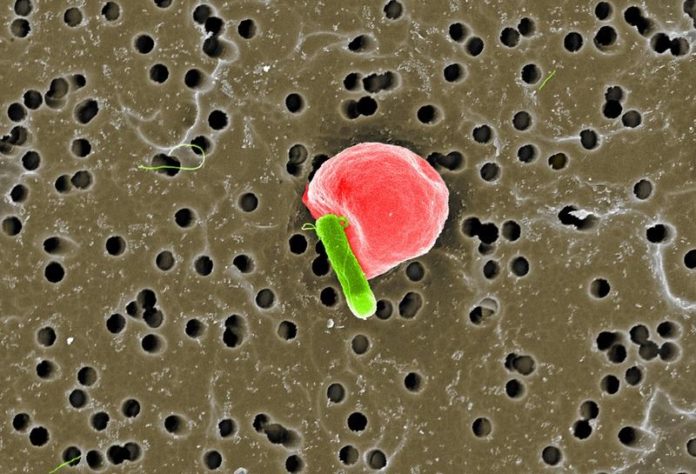Targeted Cargo Delivery Using RBC-Carrying Bacteria
Scientists at the Max Planck Institute have now constructed bacteria-propelled biohybrid microswimmers using red blood cells (RBCs; erythrocytes) as autologous cargo carriers for active and guided drug delivery.
Active microswimmers have attracted considerable attention because of their potential applications, especially for biomedical applications such as cargo transport, targeted drug delivery, biosensors, and environment remediation.
Now, this team, with the objective of developing new material platforms and systematic fabrication methods for microswimmer design and multifunctional cargo carriers, which can be applied to both synthetic catalytically driven and biohybrid microswimmers- has
developed the untethered biohybrid microswimmer.Red Blood Cells have extraordinary capabilities: in addition to possessing high payload efficiency, they can easily deform and squeeze through narrow capillaries that are half their sizes. Which is the reason the researchers zeroed in on RBCs to develop a microswimmer that would meet the criteria of high load-bearing capacity and flexibility.
This efficacy of the Red Blood Cells in combination with the driving force of bacteria – the motor of the microswimmer – makes it possible for the biohybrid to transport cargo even through narrow channels or gaps.
The team firstly, embedded the cancer drug doxorubicin as well as iron nanoparticles, for the scientists to be able to magnetically control the microswimmer.
Once it was found to reach its destination- a cancer cell- the tumour’s acidic environment attacks the membrane of the red blood cell, making it brittle, with the result that the cancer drug is released. Following this task, the researchers destroy the microswimmer by heating it with infrared light so that it decomposes.
“Three things make this microswimmer stand out compared to others”, says Oncay Yasa, who together with Yunus Alapan has been working on building the microswimmer.
“First, its deformability is impressive: the microswimmer can squeeze through narrow gaps of only two micrometers, while in itself being around 6 micrometers large. Secondly, the link between the bacterium, the motor, and the RBC, the cargo bay, is very strong due to us utilizing a very strong interaction seen in nature.”
“We use the protein Avidin, which acts as a snap hook, linking on one side to Biotin sticking out of the membrane of the bacteria and on the other side linking to antibodies (anti-TER-119) covering the RBC. That way, there is no harsh chemical reaction while binding the bacterium to the red blood cell. Rather, it´s more like a moveable snap hook system, which attaches the two parts – with Avidin in the middle. That makes the microswimmer ever more robust and flexible than others.” Oncay Yasa adds.
“Thirdly“, Yunus Alapan continues, “we loaded the RBC with special molecules that can absorb infrared light. When we apply infrared light from outside, the RBC heats up and destroys itself and the attached bacterium. That solves the problem of what to do once the drugs have been delivered. We need the bacterium to be destroyed right away to avoid its uncontrolled proliferation. We don´t want the body defending itself with an immune reaction.”
“Biohybrid microswimmers offer great potential in future non-invasive medical operations owing to their untethered steerability, high payload, deformation capabilities, and the possibility of destruction – what we call a “termination switch“, says Oncay Yasa.
“The microswimmer we developed demonstrates a unique multi-functionality that has not been observed in other bacterium-driven microswimmers before,” Metin Sitti adds, the Director of the Physical Intelligence Department at the Max Planck Institute for Intelligent Systems, who worked with Alapan and Yasa on the study.
“The presented RBC microswimmers are a great step forward in using soft biohybrid microswimmers in clinical applications, though there still exist challenges to be overcome such as immune response. Our RBC microswimmer creates the blueprint for the next generation of multimodal, targeted cargo delivery systems.” Alapan concludes.
































